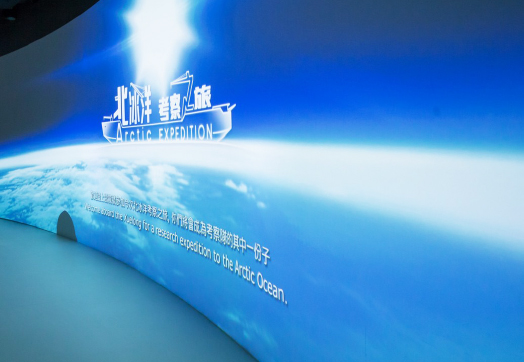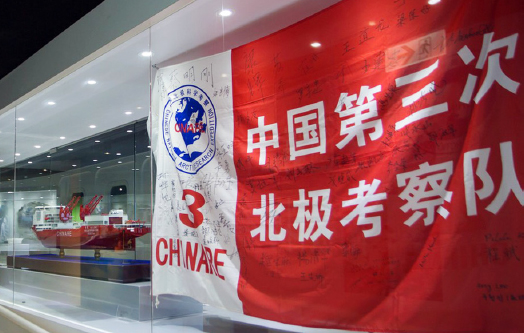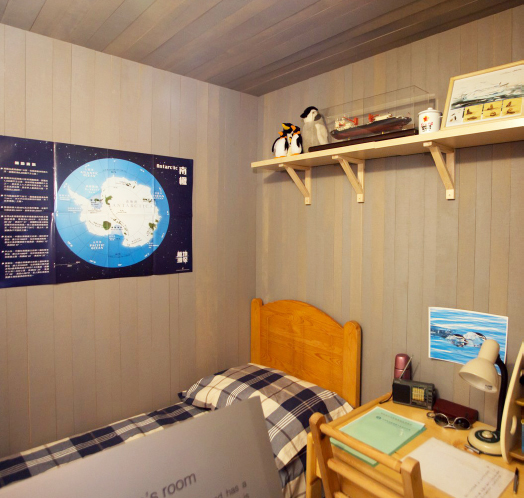
Hong Kong’s First Climate Change Museum
Hong Kong’s first ever museum dedicated to climate change opened last December at CUHK. Located a three-minute walk from the University MTR Station, the Museum of Climate Change (MoCC) takes up an airy space inside the new Yasumoto International Academic Park. Through multimedia installations and interactive displays, the museum strives to educate the public, in particular, students, about the importance of environmental conservation and sustainability.
Visitors to MoCC are greeted at the entrance to the Polar Gallery, the first of four galleries, by a large model of the Xue Long (literally ‘Snow Dragon’), China’s first ice-breaking research vessel. On display near the model are souvenirs such as caps and pins worn by scientists, and a huge flag from an expedition to the North Pole. But the bulk of the gallery’s displays are invaluable artefacts donated by Dr. Rebecca Lee Lok-sze, founder of the China Polar Museum Foundation and the first woman and Hong Konger to have visited the Earth’s three extremities—the North Pole, the South Pole, and Mount Everest. Visitors will have the privilege to see rare specimens such as whale vertebrae, antler of an Arctic deer, Arctic cotton grass, a penguin egg, and a beautiful extinct mollusk called ammonite.


Located at prime spots throughout the gallery are computers giving lively introductions to environment-related topics from nacreous cloud and aurora borealis to ice coring and how an igloo is built, as well as panels detailing China's research stations in the two poles and Mount Everest. The gallery also has a seven-minute video, complete with 'live' nature effects, that lets viewers follow the Xue Long as it makes its way from Shanghai past the Sea of Japan, the Bering Sea, on to the Canada Basin and the Arctic Sea. Wrapping up this section is a replica of Dr. Rebecca Lee's room in the Antarctica featuring original books and accessories donated by the famous explorer.
Leaving the Polar regions, one enters the Remote Sensing and Environmental Monitoring Gallery, which contains simulation of satellite images of Earth and the atmosphere, as seen inside the CUHK Satellite Remote Sensing Receiving Station. This gives viewers a taste of how it feels to be closely monitoring the Earth's changes in time and space. Inside the same room, a large screen lets visitors navigate themselves all over Hong Kong and see on Google Earth how specific areas would look with increases in sea level, which is one of the results of climate change.
The next gallery on Research and Innovation at CUHK showcases the University's research results across a wide spectrum of environmental science and energy technology topics that have potential for combatting climate change. These include biofuel, photovoltaic solar energy, photocatalytic oxidation for air and water purification, and sustainable urban design and planning.
Gracing the final section, the Hong Kong Jockey Club Green Gallery, are art pieces made with retired horseshoes, a simulator demonstrating how glass is recycled into bricks, as well as other Jockey Club green projects.
The MoCC, which opened last December, is one of three key initiatives of the CUHK Jockey Club Initiative Gaia, a five-year community engagement programme to promote environmental protection and sustainability launched by CUHK, with a generous donation of HK$54 million by the Hong Kong Jockey Club Charities Trust. More details at www.gaia.cuhk.edu.hk.



